
Fundamentals
The concept we contemplate as Metallic Elements Hair reaches far beyond mere composition, echoing the profound interconnectedness of earth, body, and spirit within the heritage of textured hair. At its simplest, it denotes the spectrum of naturally occurring minerals and trace elements that reside within the very fibers of our hair. These microscopic presences, absorbed from our internal landscapes – our diet, our water, and even the surrounding environment – contribute to hair’s structural integrity, its vitality, and its aesthetic. Understanding this elemental presence is akin to tracing the subtle imprints of our ancestors, whose very existence was intrinsically linked to the land and its offerings.
Consider hair not merely as a biological appendage, but as a living archive, a repository of narratives whispered across generations. Within each strand, elements like Iron, Magnesium, Zinc, and Copper are found, integral components of the protein-enzymatic systems that orchestrate hair growth and overall health. These are the building blocks, the Earth’s generous gifts woven into our very being.
Their presence, or indeed their absence, can subtly alter the hair’s character, its strength, and its responsiveness to care. For those who tend to textured hair, this elemental dialogue is a whisper of wisdom, prompting a deeper listening to what the hair truly requires for its flourishing.
Historically, before the advent of sophisticated scientific instruments, our forebears possessed an intuitive understanding of this elemental interplay. They observed the land, the waters, and the effects these had on hair. Ingredients sourced directly from the earth, such as various clays, plant oils, and herbal infusions, were central to their hair care rituals. These practices were often imbued with an unspoken wisdom about the mineral content these natural materials carried, and how they interacted with the hair.
Metallic Elements Hair represents the intrinsic mineral and trace element content within hair fibers, reflecting both biological sustenance and environmental imprints.

Elemental Whispers in Ancestral Practices
The rich tapestry of ancestral hair care traditions across African and diasporic communities often incorporated elements rich in minerals. For instance, various Clays, long revered in many cultures, were used not only for cleansing but also for their perceived restorative properties. Such clays, like bentonite, often contain naturally occurring minerals such as iron, magnesium, and calcium.
The application of these earthy substances was a testament to an ancient understanding of topical nutrition, even if the precise scientific mechanisms remained unarticulated in modern terms. These practices were often communal, fostering bonds and passing down intergenerational knowledge about nurturing hair with what the earth provided.
The very water used for cleansing held its own elemental story. In many regions, natural water sources contained varying levels of dissolved minerals, commonly referred to as ‘hard water.’ This mineral richness, particularly of Calcium and Magnesium, would inevitably interact with the hair. While contemporary science might speak of mineral buildup and cuticle disruption, ancestral practices often developed compensatory methods, such as specific herbal rinses or oiling techniques, to mitigate any undesired effects and maintain hair’s suppleness. These adaptive rituals speak volumes about the ingenuity and observational acuity of our ancestors in working with the natural world.
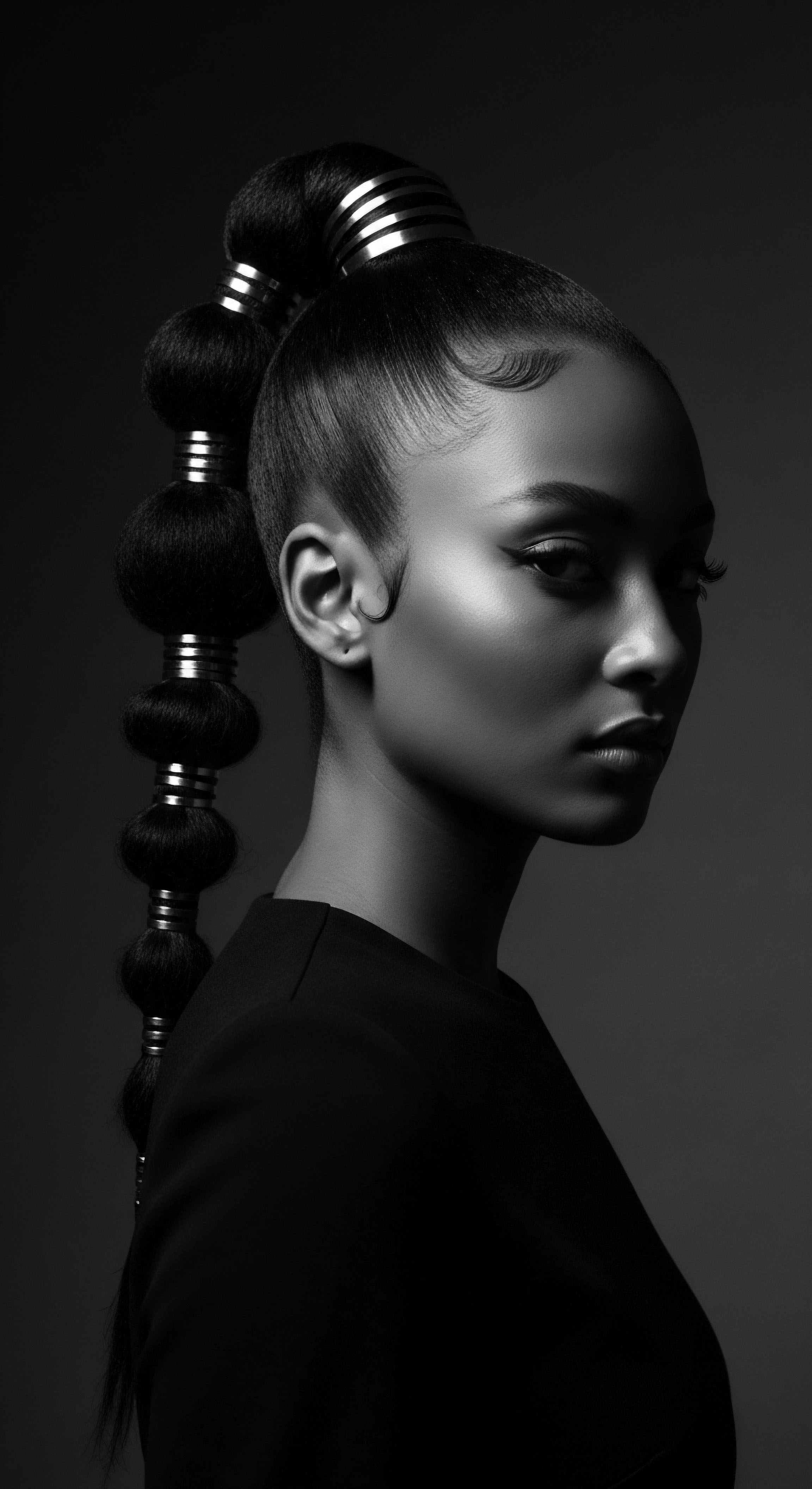
Intermediate
Delving deeper into the understanding of Metallic Elements Hair requires us to consider its multifaceted nature, moving beyond a simple identification of elements to explore their provenance and profound impact on hair health, viewed through the lens of our shared heritage. The metallic elements found within hair strands originate from both the internal environment of the body and external exposures, each contributing to the unique elemental signature of an individual’s hair. This confluence of internal nourishment and external influence paints a detailed picture of well-being, resonating with the holistic views often present in ancestral wisdom.
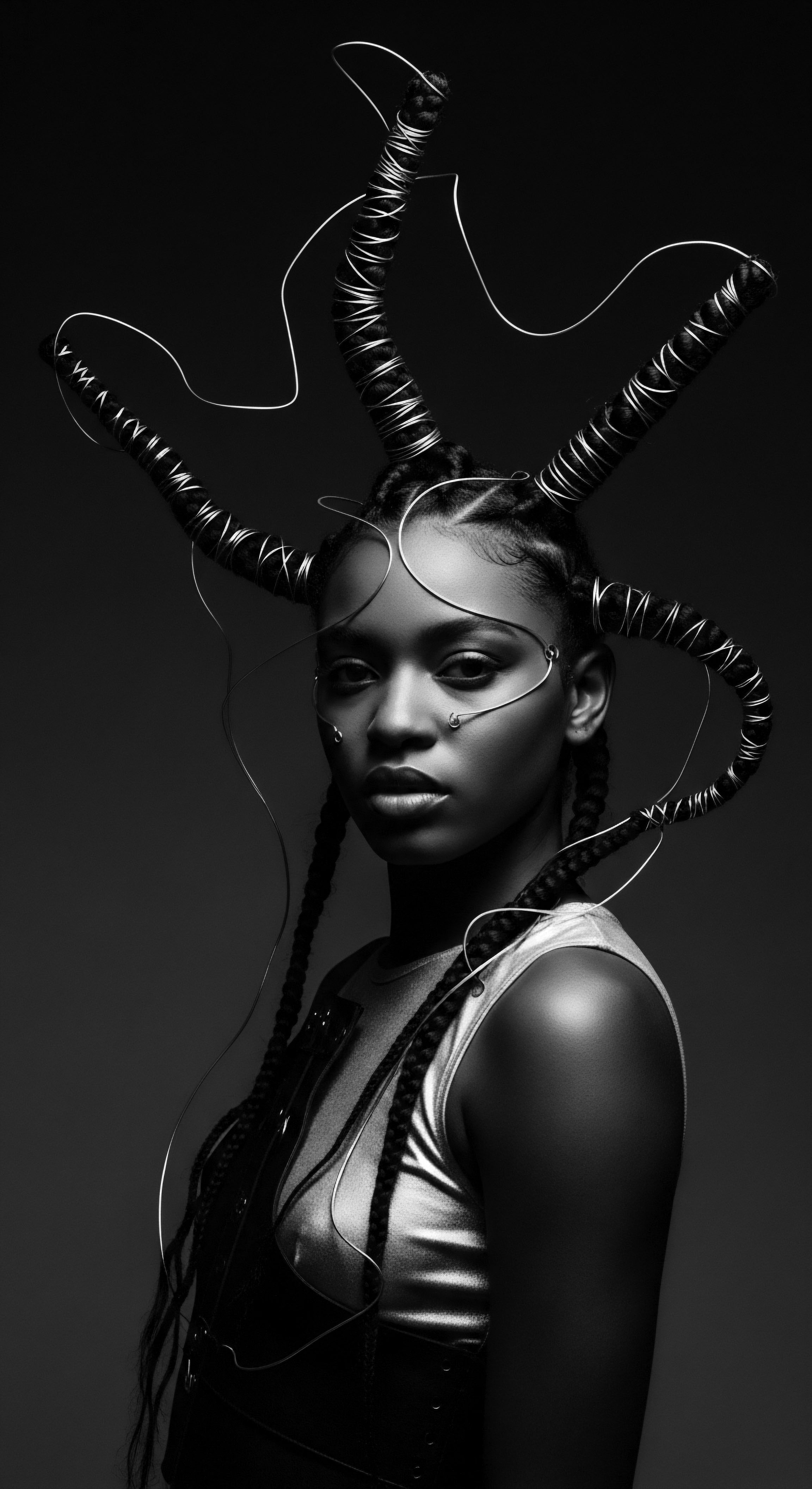
Sources of Elemental Presence
The most primary source of these elements is our dietary intake. Essential minerals such as Zinc, Iron, and Selenium are crucial for hair growth and overall vitality. Deficiencies in these key micronutrients can manifest in various hair concerns, including hair loss or changes in texture. Ancestors recognized the profound link between inner sustenance and outer vibrancy, selecting foods and herbal remedies that instinctively nourished the body and, by extension, the hair.
Beyond internal consumption, environmental factors play a significant role. The water used for washing hair, for instance, often carries a unique mineral profile based on its geological journey. Hard water, abundant in calcium and magnesium, can deposit these minerals onto the hair shaft.
Over time, these deposits contribute to what is colloquially known as “mineral buildup,” leading to a dull appearance, reduced moisture absorption, and increased brittleness, especially for textured hair. Our ancestors, living in intimate relationship with their environment, intuitively understood the qualities of their local water sources and developed intricate hair care practices to counteract or complement its effects.

Impact on Hair Health and Traditional Responses
The interaction of metallic elements with textured hair, particularly its unique coily and kinky structures, is a subject of both scientific inquiry and deep cultural understanding. High porosity hair, often characteristic of textured strands, can absorb moisture quickly due to lifted cuticles, but it can also lose that moisture just as rapidly. When mineral deposits from hard water accumulate, they form a film on the hair, hindering proper moisture absorption and leaving strands feeling rough and dry.
Consider the profound wisdom embedded in traditional hair care routines. For generations, African and diasporic communities have employed diverse natural ingredients to preserve hair health. These practices often circumvented or directly addressed issues now attributed to metallic element interactions.
- Shea Butter ❉ Derived from the nuts of the shea tree, native to Africa, this rich butter is replete with vitamins and essential fatty acids. Its use across generations speaks to its ability to deeply moisturize and protect hair from environmental stressors, acting as a natural barrier against mineral deposits and dryness.
- Coconut Oil ❉ A staple in many tropical regions, coconut oil has long been used for its nourishing properties. Its molecular structure allows for deeper penetration into the hair shaft, helping to reduce protein loss and providing a protective layer that can mitigate the drying effects of mineral-rich water.
- Clays (e.g. Bentonite, Rhassoul) ❉ These earthy substances, historically used for cleansing and detoxification, inherently contain various minerals. While modern science explains their ability to absorb negatively charged toxins and excess oils, their traditional application often left hair feeling softened and purified, suggesting an intuitive understanding of their interaction with hair’s elemental balance.
The historical example of the Himba tribe of Namibia offers a compelling illustration of this inherited wisdom. The Himba women coat their hair and bodies with a paste known as ‘otjize,’ a mixture of butterfat, ochre pigment (which is iron-rich clay), and aromatic resin. This ancestral practice, observed for centuries, provides a protective layer against the harsh arid climate, simultaneously acting as a cleanser and a conditioner, and importantly, an aesthetic and cultural statement. The iron oxides within the clay contribute to the distinctive reddish hue, but also, perhaps, offered an unspoken benefit in managing the local water’s mineral content or providing topical iron.
This is more than a beauty ritual; it embodies a holistic approach to body care that seamlessly integrates environmental realities with cultural identity, demonstrating a deep, embodied knowledge of metallic elements’ interaction with hair long before scientific nomenclature existed. (Fox, 2021)
The journey of understanding Metallic Elements Hair involves recognizing how both internal nourishment and external environmental factors sculpt our hair’s elemental signature.
This traditional knowledge, passed down through the gentle, rhythmic act of communal hair care, reveals a profound connection to the land and its resources. Our ancestors did not need laboratory analyses to perceive the changes in their hair influenced by water or local soil; their observations guided their ingenious adaptations, leading to routines that sustained hair health across generations.
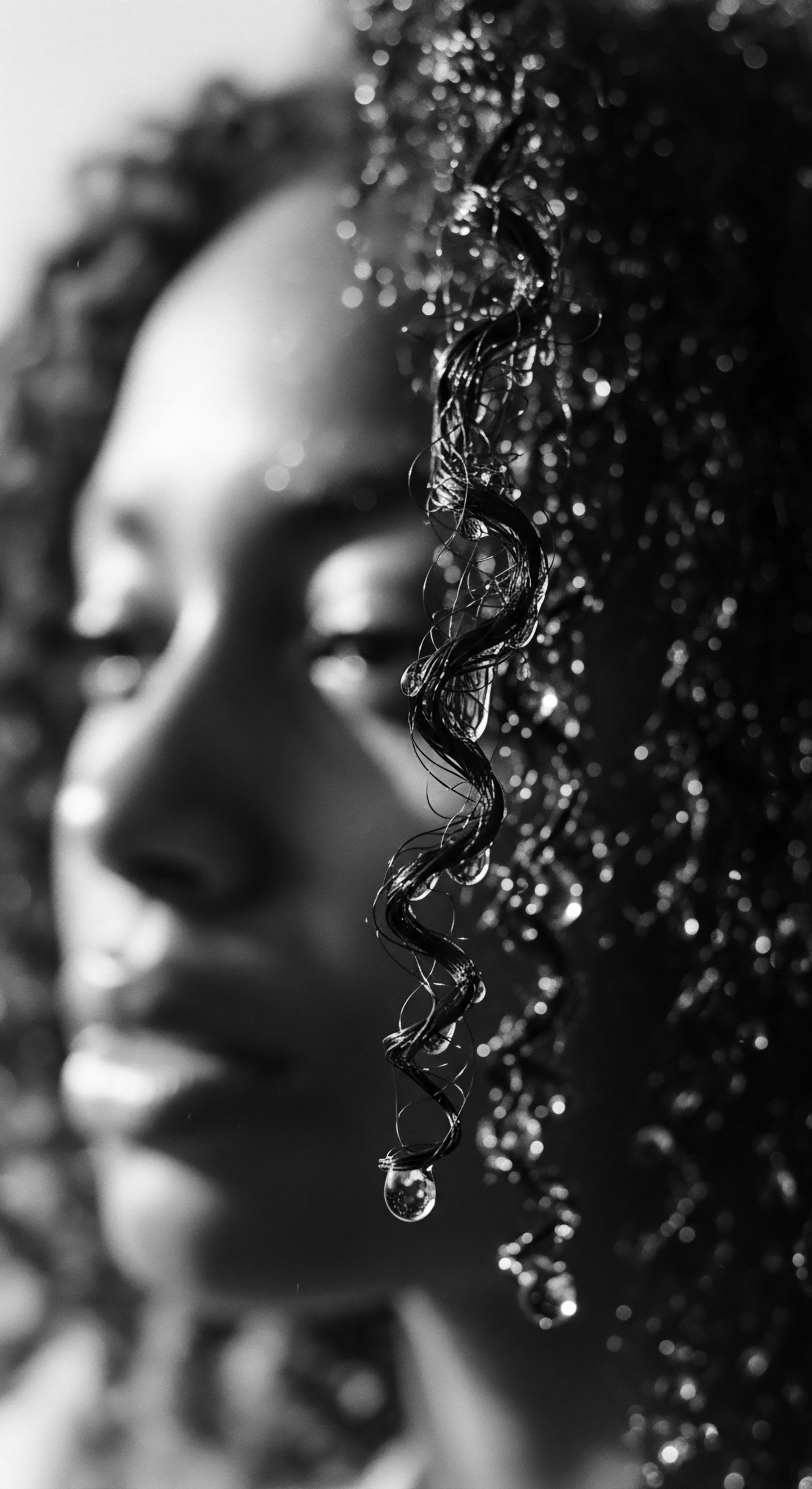
Early Perceptions of Hair’s Vitality
Long before microscopy could reveal the intricate structure of a hair shaft or identify its elemental constituents, communities across Africa held a deep reverence for hair as a source of strength, identity, and spiritual power. The resilience of hair was understood as a reflection of overall well-being and connection to ancestral lines. While they might not have articulated “metallic elements” as a concept, their practices implicitly acknowledged the qualities that modern science now attributes to mineral balance. For instance, the richness of color and texture, the resistance to breakage, or the ability of hair to retain its styles were all qualities that would have been keenly observed and sought after, indirectly reflecting the underlying elemental health of the hair.
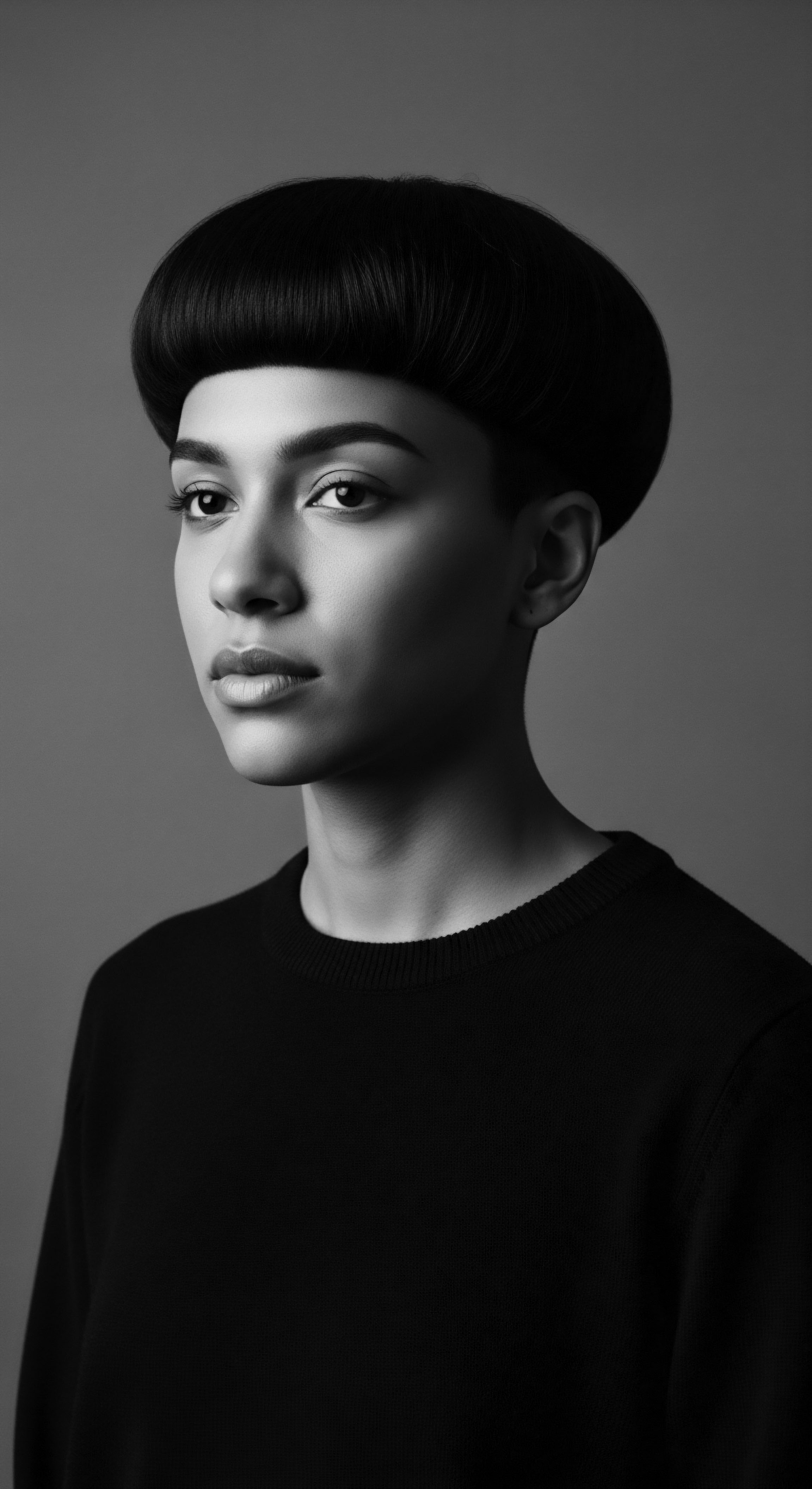
Academic
The academic understanding of Metallic Elements Hair (MEH) transcends a mere inventory of constituent components, reaching into the intricate biological mechanisms and profound cultural implications of these elemental presences within the hair fiber. This exploration requires a nuanced, interdisciplinary lens, bridging the precise language of chemistry and biology with the rich historical and anthropological narratives of Black and mixed-race hair traditions. MEH, at its most comprehensive, represents the quantifiable presence of inorganic mineral ions and trace elements incorporated into the hair structure during its growth phase, serving as a complex biomarker for internal physiological status, external environmental exposure, and the historical efficacy of culturally specific hair care practices.
The hair, composed primarily of the protein Keratin, functions as a remarkable bio-accumulator, a silent record keeper of the body’s internal milieu and its interactions with the external world. As hair follicles synthesize new protein, essential minerals such as Calcium, Magnesium, Zinc, Iron, and Copper are incorporated from the bloodstream. These are not inert inclusions; they are integral to the protein-enzymatic systems that underpin healthy hair growth and structure. For instance, zinc is a cofactor for numerous enzymes involved in protein synthesis and cell division, processes critical for hair follicle function.
Iron is essential for oxygen transport to the hair follicle, a prerequisite for robust growth. Deficiencies in these vital elements can lead to compromised hair integrity, including thinning, loss, or changes in texture. The dynamic interplay between these essential elements must be considered, as imbalances, including excesses of certain minerals, can also have detrimental effects.
Metallic Elements Hair, from an academic vantage, offers a unique biopsy of an individual’s long-term internal and external elemental narrative.

The Biogeochemical Dialogue of Hair
The external environment profoundly shapes the elemental fingerprint of hair. Water quality, a pervasive and often overlooked factor in hair health, introduces a significant external source of metallic elements. Hard water, defined by its elevated concentrations of divalent metallic ions, primarily Calcium and Magnesium, interacts directly with the hair shaft during washing. These positively charged mineral ions readily bind to the negatively charged surfaces of hair, particularly hair with higher porosity (often characteristic of textured hair types due to natural cuticle patterns or damage).
This binding creates a mineral film, or buildup, on the hair’s surface and within its cuticle layers. The consequences for textured hair are particularly significant. This mineral coating can impede moisture absorption, leading to dryness, brittleness, and a lack of luster. Furthermore, these deposits can disrupt the hair’s cuticle, exacerbating existing porosity issues and making strands more vulnerable to breakage.
The alteration of the hair’s surface can also reduce the efficacy of cleansing agents and conditioning treatments, as products struggle to penetrate the mineral barrier. A notable study indicates that hard water’s mineral deposits can clog hair follicles, weaken strands, and disturb the scalp’s natural ecosystem, potentially increasing hair breakage and reducing density over time. This scientific understanding affirms observations made implicitly through generations of hair care in communities facing these environmental realities.
| Traditional Practice / Ingredient Clay Masks (e.g. Bentonite, Rhassoul) |
| Associated Metallic Elements / Benefits (Traditional View) Purifying, strengthening, adding luster. Often believed to "draw out impurities." |
| Scientific Explanation / Modern Link Contain minerals like iron, magnesium, calcium. Known for their adsorptive properties, attracting negatively charged toxins and excess oils; can impart minerals topically. |
| Traditional Practice / Ingredient Rice Water Rinses (e.g. Yao, Tamil traditions) |
| Associated Metallic Elements / Benefits (Traditional View) Promoting length, strengthening, adding shine, delaying graying. |
| Scientific Explanation / Modern Link Rich in amino acids, B vitamins (including inositol), and minerals. Peptides and starches coat hair, improve elasticity, and can counteract mineral-laden hard water. |
| Traditional Practice / Ingredient Chebe Powder (Chadian Basara Women) |
| Associated Metallic Elements / Benefits (Traditional View) Length retention, minimizing breakage, strengthening hair. |
| Scientific Explanation / Modern Link High content of natural fats and minerals; believed to seal in moisture and fortify strands, particularly beneficial for textured hair types. |
| Traditional Practice / Ingredient Natural Oils (e.g. Shea Butter, Coconut Oil) |
| Associated Metallic Elements / Benefits (Traditional View) Moisturizing, protecting, adding softness and sheen. |
| Scientific Explanation / Modern Link Rich in fatty acids and vitamins (A, E) that provide deep hydration and protect the hair cuticle, creating a barrier that can reduce mineral adhesion from water. |
| Traditional Practice / Ingredient These examples illustrate how ancestral wisdom, often rooted in observation and adaptation, aligns with or is further illuminated by modern scientific understanding of hair's interaction with metallic elements. |
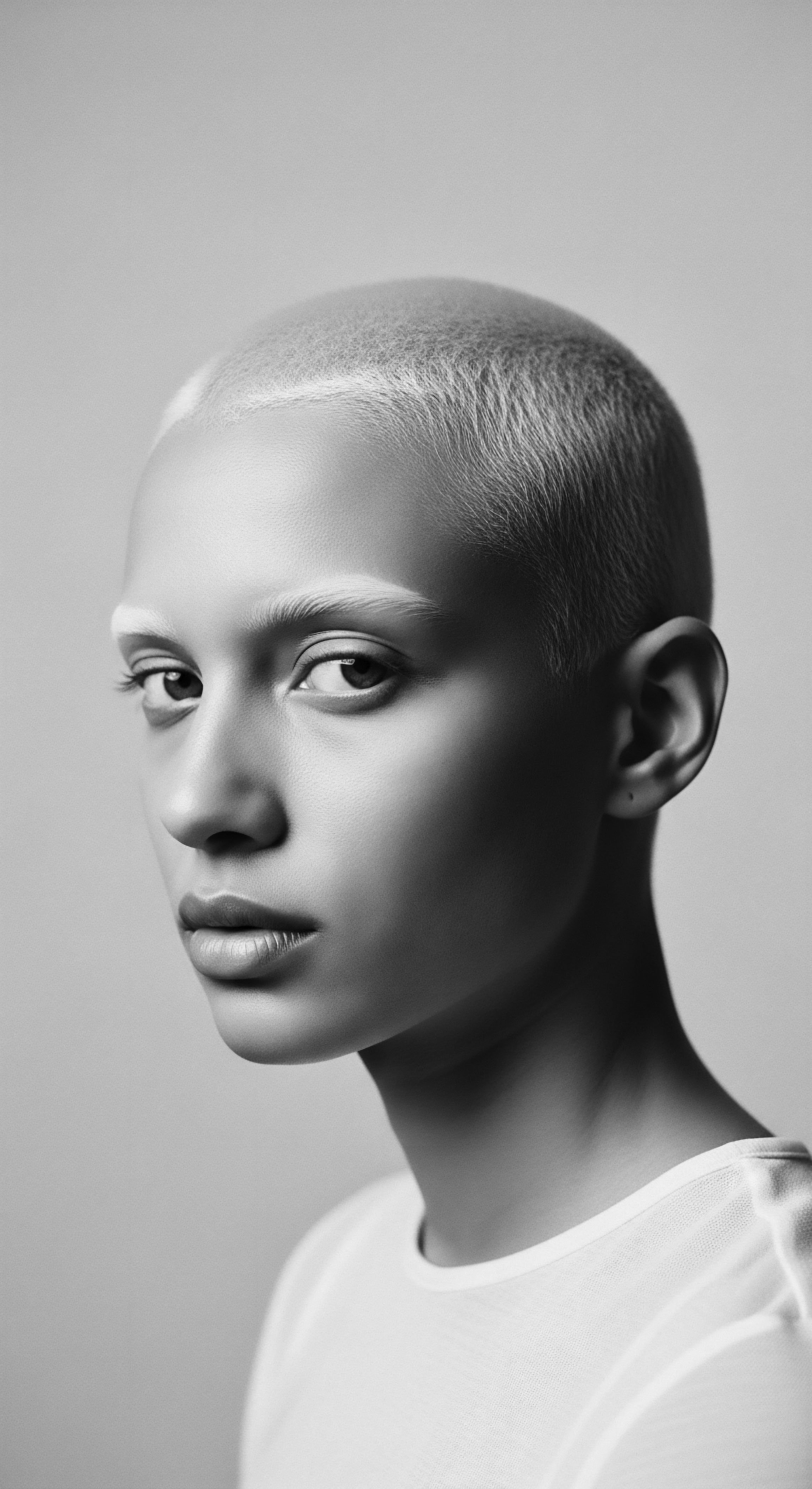
Cultural Narratives and Elemental Challenges
The narrative of Metallic Elements Hair is incomplete without acknowledging its profound cultural dimensions, particularly within the history of Black and mixed-race hair. The journey of textured hair through colonialism and slavery was marked by systemic attempts to strip individuals of their identity, often commencing with the forced shaving of hair. This act, devastating in its intent, severed a deep connection to ancestral practices and the natural ingredients traditionally used for hair care, many of which inherently addressed the challenges posed by environmental metallic elements.
In the diaspora, access to indigenous knowledge and natural resources was often limited, forcing adaptation and innovation in hair care. The impact of hard water, for example, became a practical challenge that communities learned to navigate. The accumulated mineral deposits on hair, often making it feel rougher or more difficult to manage, inadvertently reinforced Eurocentric beauty standards that favored straight, smooth hair. This led some to seek chemical straightening methods, which further compromised hair structure and porosity, potentially exacerbating the issues of mineral buildup.
- Water Hardness as a Colonial Echo ❉ In regions with historically high water hardness, often those where enslaved peoples were forced to labor, the physical effects of mineral deposits on textured hair likely intensified the perception of “unruly” hair. This environmental factor, while seemingly neutral, became intertwined with racialized beauty standards, contributing to the narrative that Black hair required taming or alteration to conform to Western ideals. This reveals a subtle layer of environmental adversity layered upon the overt societal pressures.
- Ingenuity in Scarcity ❉ Despite the scarcity of traditional resources and tools, individuals continued to practice forms of hair care, using what was available. This included creating makeshift combs from found materials and applying animal fats or locally available plant oils. These adaptive strategies, while perhaps less sophisticated than ancestral methods, still aimed to counteract the effects of harsh conditions, including those possibly related to metallic elements in water or environment.
- The Resilience of Communal Care ❉ Hair care remained a communal activity, a space for shared wisdom and resilience. Even in the face of profound adversity, the act of braiding, oiling, and tending to hair together preserved a vital link to cultural identity and ancestral practices, often implicitly passing on knowledge about managing hair’s elemental interactions.

Hair Mineral Analysis ❉ A Bridge to Understanding
Modern advancements in analytical chemistry, particularly Hair Tissue Mineral Analysis (HTMA), offer a scientific avenue for understanding the elemental composition of hair with remarkable precision. This quantitative test measures the levels of various essential and toxic elements in hair, providing a long-term snapshot of an individual’s nutritional status, metabolic activity, and exposure to environmental contaminants. Unlike blood tests, which reflect transient levels, hair acts as a stable record, accumulating elements over weeks and months as it grows.
The application of HTMA to individuals with textured hair, particularly those from diasporic communities, presents a compelling opportunity to bridge scientific understanding with ancestral wisdom. By analyzing the elemental profiles, researchers can identify potential deficiencies in essential minerals (e.g. zinc, iron) that might compromise hair health, or excesses of environmental contaminants (e.g.
lead from historical water systems or industrial exposure). This data can then inform personalized hair care regimens that acknowledge both genetic predisposition and environmental factors, resonating with the holistic approach of traditional practices.
For instance, a study in Poland analyzing hair mineral composition found significant variations in elements like calcium, potassium, magnesium, sodium, copper, and iron across different regions, and observed changes in heavy metal levels over time, indicating environmental improvement. While this study is not specific to textured hair, it illustrates the potential of hair analysis to reveal the impact of local environmental mineral profiles. Applying such rigorous analysis to diverse hair types, including textured hair, can further elucidate the specific elemental challenges and opportunities faced by various communities, offering a data-driven complement to the rich body of traditional knowledge. This integration validates ancestral intuitions with empirical evidence, deepening our appreciation for the adaptive strategies that have sustained hair heritage.
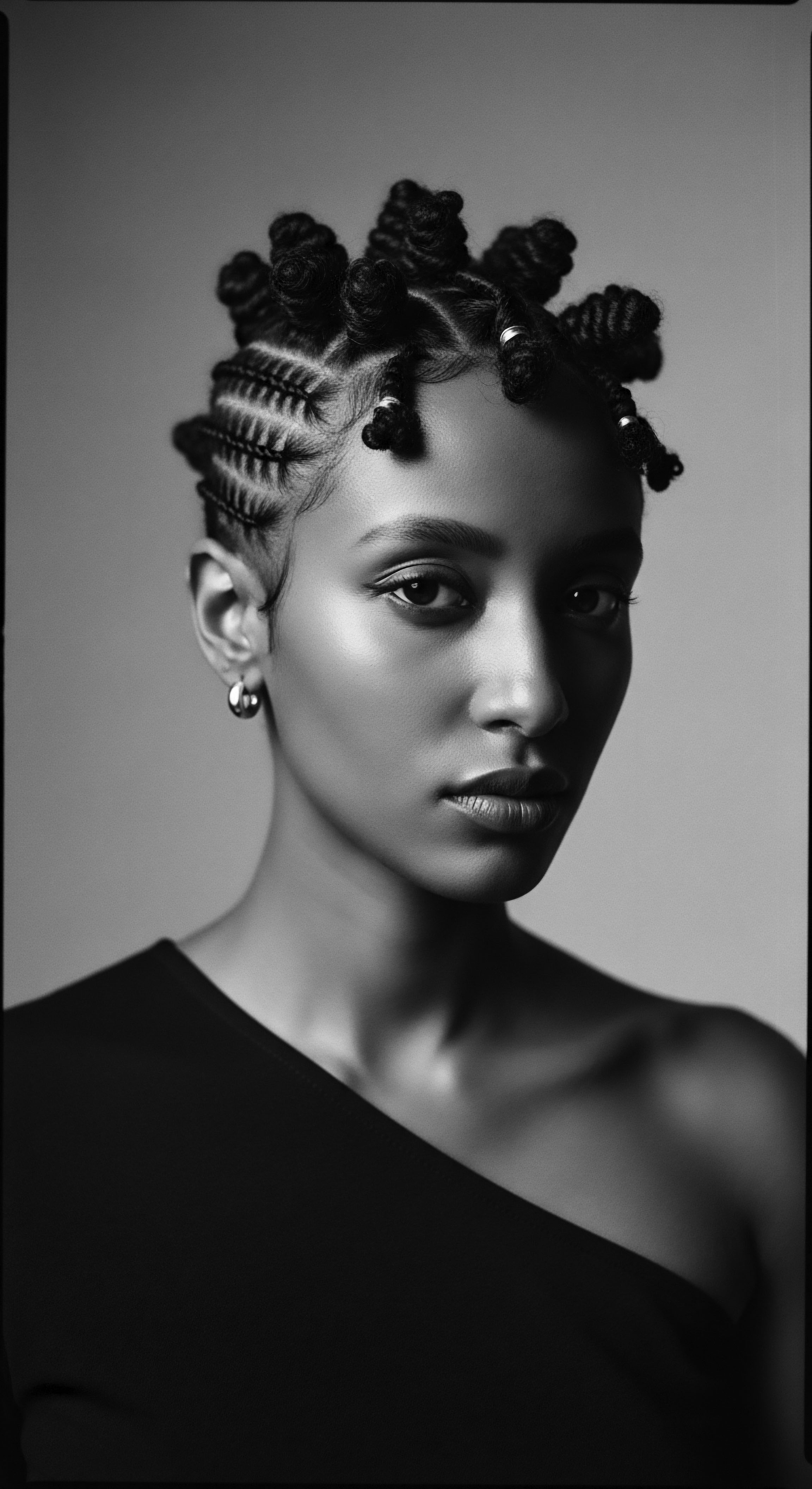
Reflection on the Heritage of Metallic Elements Hair
Our journey through the landscape of Metallic Elements Hair leads us to a profound reflection on the enduring heritage and evolving significance of textured hair. We perceive that hair, a vibrant expression of self and lineage, exists in a constant conversation with the world around it, absorbing not only nourishment from within but also the very elemental whispers of the earth and sky. The ancestral practices, born from centuries of keen observation and adaptive ingenuity, stand as a testament to an innate understanding of this elemental dialogue, long before modern science offered its precise nomenclature.
The enduring resilience of Black and mixed-race hair traditions, often forged in the crucible of adversity and cultural dispossession, speaks volumes. Despite challenges like harsh water sources or limited resources, communities safeguarded their hair heritage, passing down rituals that intuitively addressed issues we now attribute to mineral interactions. These practices were more than mere aesthetics; they were acts of resistance, communal bonding, and a profound declaration of identity.
As we move forward, a harmonious blending of ancestral wisdom and contemporary scientific insight calls to us. The lessons embedded in historical uses of clays, herbal rinses, and nourishing oils, once viewed as simply tradition, are now often affirmed by scientific inquiry into their elemental benefits. This convergence empowers us to approach hair care with deeper reverence, understanding that each strand carries an elemental story, a chronicle of our shared heritage and connection to the Earth. The future of textured hair care rests not in discarding the past, but in drawing from its deep wellspring, allowing ancestral knowledge to illuminate our path towards holistic hair wellness.
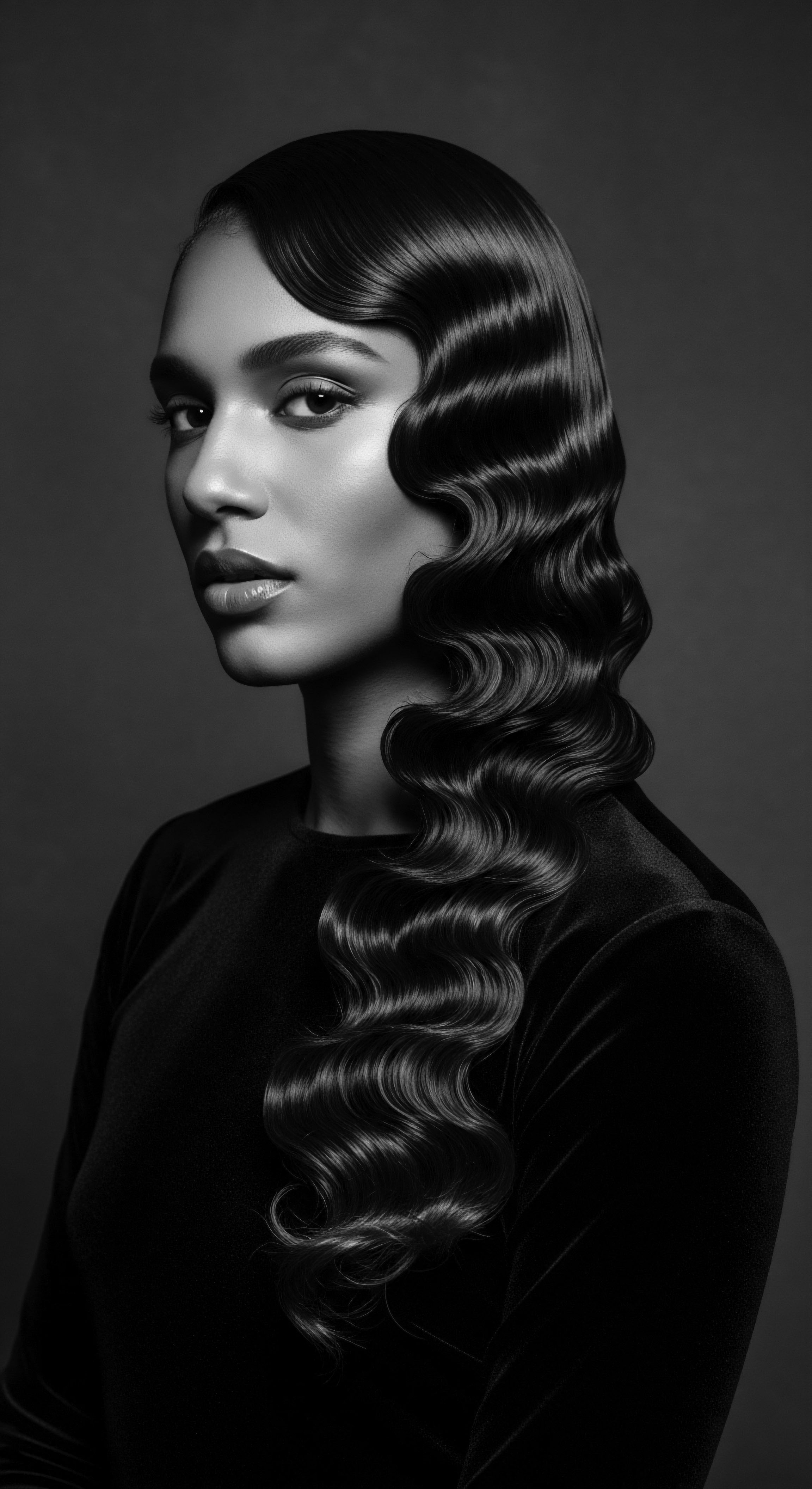
References
- Byrd, Ayana, and Lori L. Tharps. Hair Story ❉ Untangling the Roots of Black Hair in America. St. Martin’s Press, 2001.
- Colomas, Joanna. “Unlock Ancient Hair Care Secrets ❉ Discover Global Rituals for Lustrous Locks.” Joanna Colomas, December 2, 2023.
- Davis-Sivasothy, Audrey. The Science of Black Hair ❉ A Comprehensive Guide to Textured Hair Care. Saja Publishing Company, 2011.
- Fox, Taylore. “The Evolution of Black Hair for Beauty & Resistance.” Thrifts & Tangles, December 16, 2021.
- Izydorczyk, Małgorzata, et al. “Hair Mineral Analysis in the Population of Students Living in the Lower Silesia Region (Poland) in 2019 ❉ Comparison with Biomonitoring Study in 2009 and Literature Data.” ResearchGate, December 9, 2024.
- Martel, M. “Indigenous Knowledge Applied to the Use of Clays for Cosmetic Purposes in Africa ❉ An Overview.” Sabinet African Journals, 2009.
- Okpalaojiego, Jennifer. “The Remarkable History Behind Black Hairstyles.” University of Salford Students’ Union, October 29, 2024.
- Pekasiewicz, Dariusz, et al. “Effects of Mineral Mixture Addition on the Level of Selected Macroelements in the Hair of Polish Holstein-Friesian Cows.” ARCC Journals, 2016.
- Ruiz-Ruiz, Francisco, et al. “Cosmetopoeia of African Plants in Hair Treatment and Care ❉ Topical Nutrition and the Antidiabetic Connection?” MDPI, February 1, 2024.
- Underwood, Eric J. Trace Elements in Human and Animal Nutrition. Fourth Edition. Academic Press, Inc. 1977.
